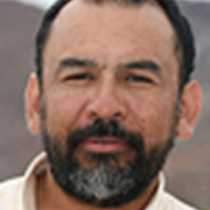Los Islotes & Bonanza Bay, Espiritu Santo Island
The unpredictable weather of the Gulf of California surprised us today being very pleasant with calm water, flat like a mirror, with great visibility, normal temperature range for wintertime, a bright and warm sun over a clear, deep-blue sky, and a refreshing breeze.
We on the National Geographic Sea Bird took advantage of these conditions and anchored at Los Islotes, a beautiful pink-colored volcanic rookery famous for its permanent and active colony of California sea lions. Our Zodiacs went around the islets of high and steep cliffs to observe magnificent frigate birds and blue-footed and brown boobies that perched on and soared above them. These bird species have occupied the same site for thousands of years, so they have left thick layers of whitish guano that still can be seen all over the rocks. On the base of the cliffs, hundreds of sea lions were basking and sleeping, barking or competing for small individual room. Their voices were amplified and echoed by the high walls of the islets.
Our enthusiasm led us to later snorkel among these fascinating marine mammals. As soon as we entered the water, the most curious and younger individuals approached and displayed acrobatic manners, as if they were trying to impress us with their submarine capabilities. Many fish species and marine invertebrates were seen as well.
For the afternoon activities we re-positioned our ship to a beautiful beach known as Bonanza Bay in Espiritu Santo Island. The long sandy beach invited us to relax walking on it and looking for shells and other marine curiosities. There were hikers that explored the interior, and brought good news: the sighting of one of the most spectacular endemic creatures of this island, the black jackrabbit. This beautiful member of the lagomorphs evolved in isolation probably since the formation of the island at the end of the Ice Ages, and became a separate species from its counterpart on the peninsula.
Land birds were also seen during the hikes, including loggerhead shrikes, Gila woodpeckers, verdins, blue-gray gnatcatchers and mockingbirds, or cenzontles “birds of the four hundred voices,” as they are called in Mexico.
Kayaking was organized as well, on the Pacific waters of the bay. On the kayaks some of us explored the shore and observed incredible rock formations, and from the distance a long fault (dividing the younger volcanic part from the older granitic part) was perfectly visible to us. By the end of the day, we realized that the Gulf of California treated us very well!
The unpredictable weather of the Gulf of California surprised us today being very pleasant with calm water, flat like a mirror, with great visibility, normal temperature range for wintertime, a bright and warm sun over a clear, deep-blue sky, and a refreshing breeze.
We on the National Geographic Sea Bird took advantage of these conditions and anchored at Los Islotes, a beautiful pink-colored volcanic rookery famous for its permanent and active colony of California sea lions. Our Zodiacs went around the islets of high and steep cliffs to observe magnificent frigate birds and blue-footed and brown boobies that perched on and soared above them. These bird species have occupied the same site for thousands of years, so they have left thick layers of whitish guano that still can be seen all over the rocks. On the base of the cliffs, hundreds of sea lions were basking and sleeping, barking or competing for small individual room. Their voices were amplified and echoed by the high walls of the islets.
Our enthusiasm led us to later snorkel among these fascinating marine mammals. As soon as we entered the water, the most curious and younger individuals approached and displayed acrobatic manners, as if they were trying to impress us with their submarine capabilities. Many fish species and marine invertebrates were seen as well.
For the afternoon activities we re-positioned our ship to a beautiful beach known as Bonanza Bay in Espiritu Santo Island. The long sandy beach invited us to relax walking on it and looking for shells and other marine curiosities. There were hikers that explored the interior, and brought good news: the sighting of one of the most spectacular endemic creatures of this island, the black jackrabbit. This beautiful member of the lagomorphs evolved in isolation probably since the formation of the island at the end of the Ice Ages, and became a separate species from its counterpart on the peninsula.
Land birds were also seen during the hikes, including loggerhead shrikes, Gila woodpeckers, verdins, blue-gray gnatcatchers and mockingbirds, or cenzontles “birds of the four hundred voices,” as they are called in Mexico.
Kayaking was organized as well, on the Pacific waters of the bay. On the kayaks some of us explored the shore and observed incredible rock formations, and from the distance a long fault (dividing the younger volcanic part from the older granitic part) was perfectly visible to us. By the end of the day, we realized that the Gulf of California treated us very well!



